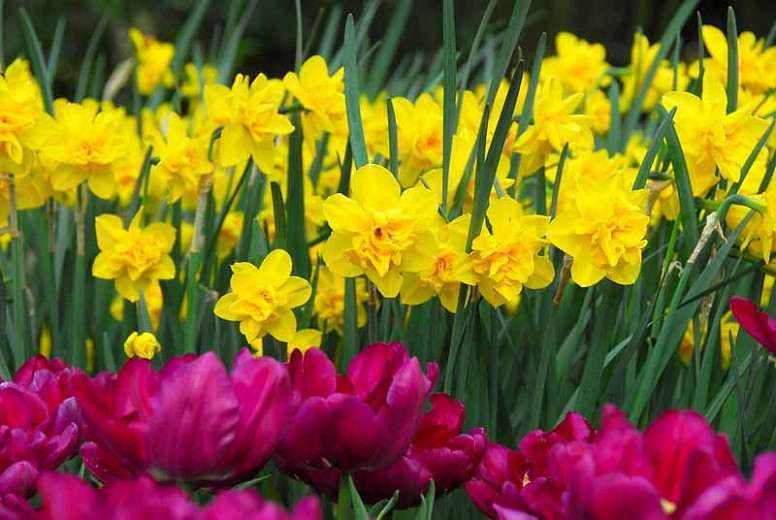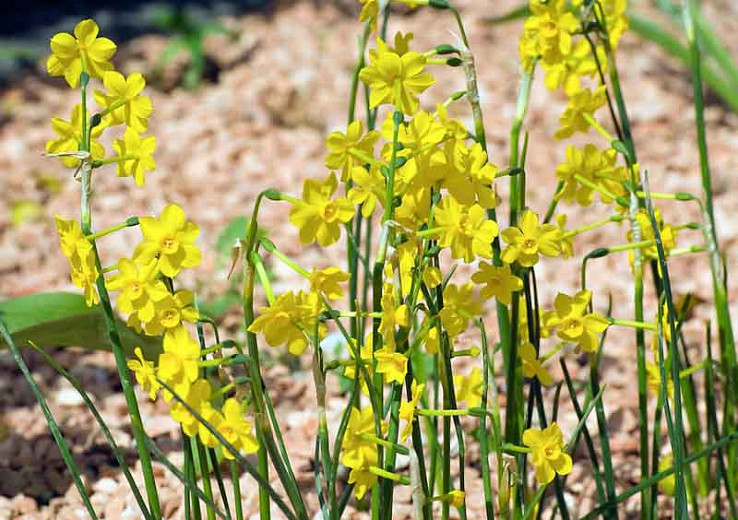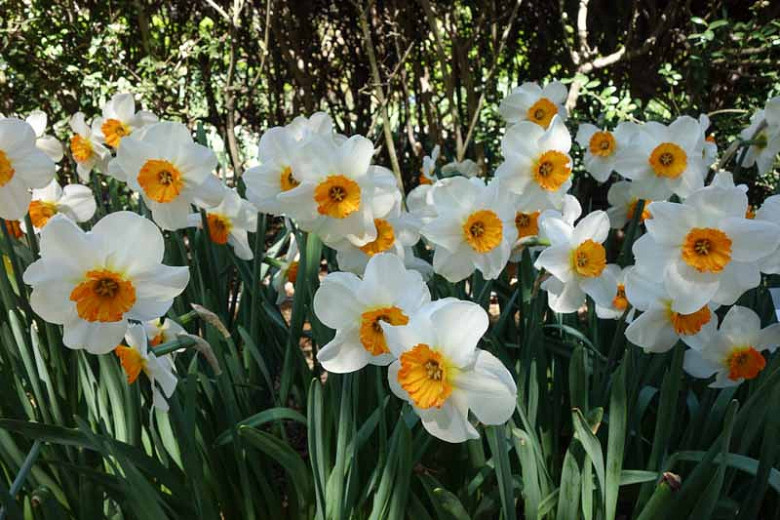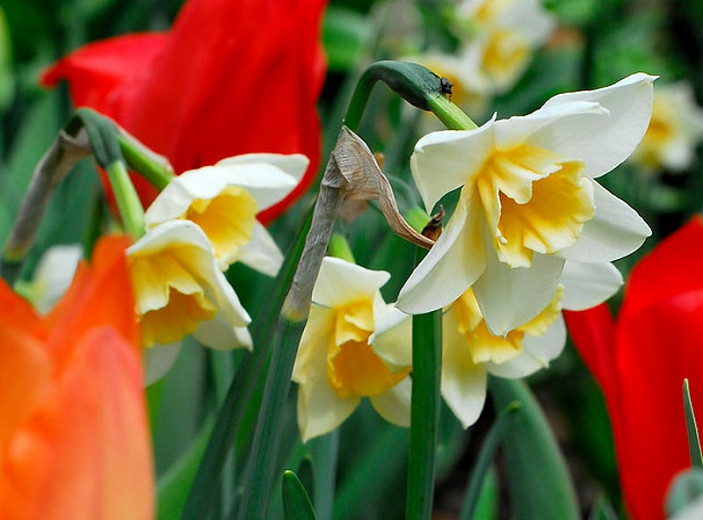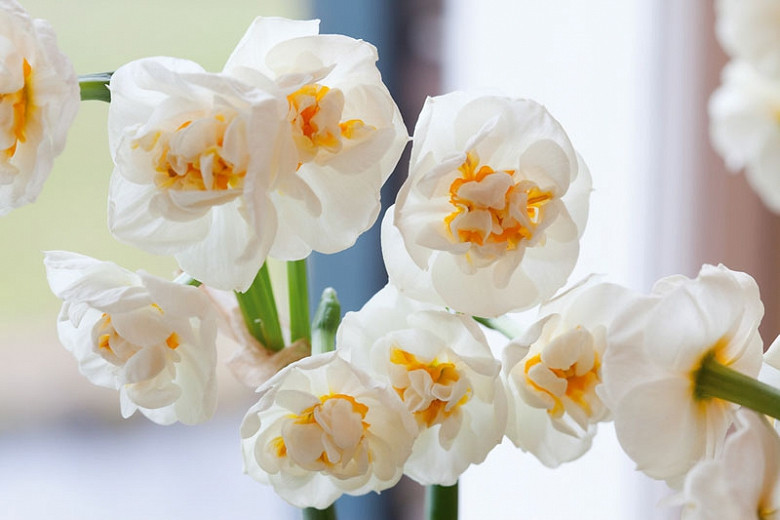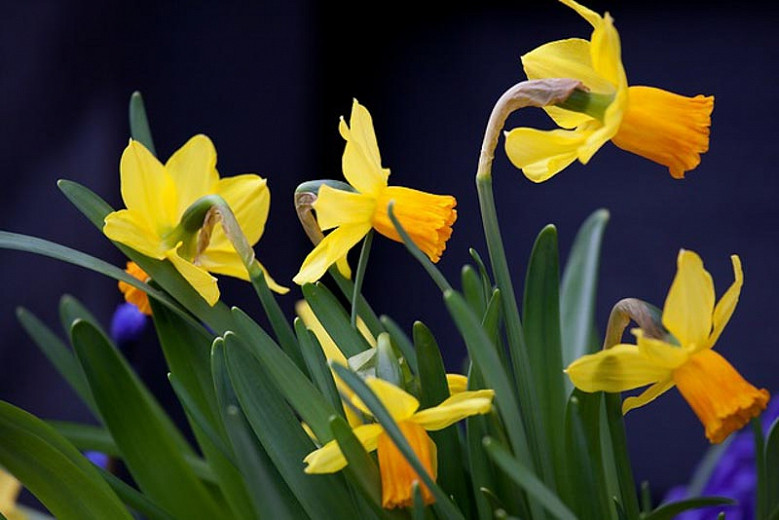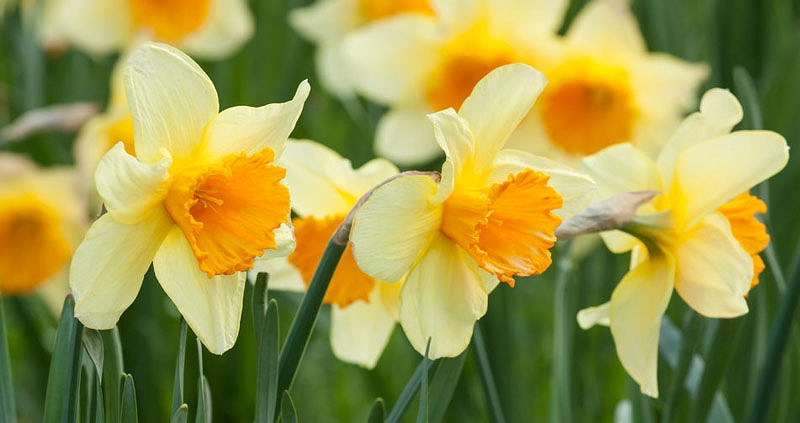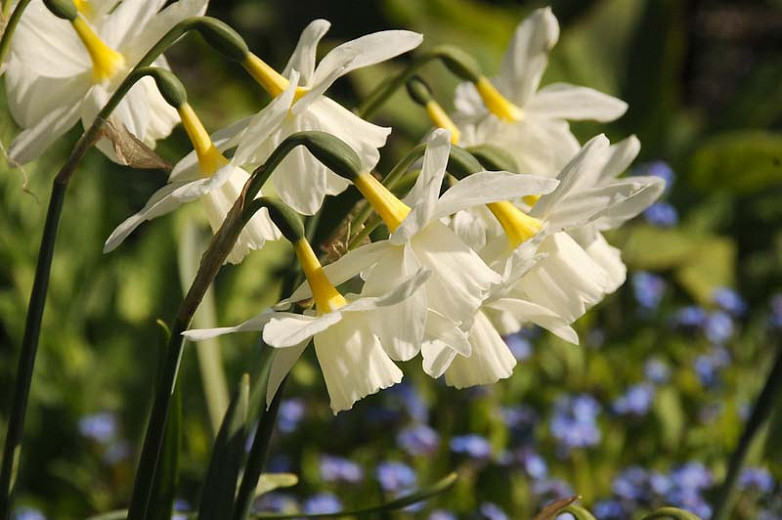Double Daffodils (Narcissus)
Incredibly romantic and beautiful, Double Daffodils resemble peonies or carnations more than classic daffodils with their packed rows of petals and all their frills. This group includes either daffodils with a doubled trumpet or daffodils with a double row of petals or even both. Many cultivars are sweetly fragrant. They usually bear one flower per stem, but occasionally may have more. Flower colors range from yellow, white to peach, pink or red and these lovely blossoms are usually expected in mid to late spring. Double Daffodils work especially well under flowering trees and shrubs.
Incredibly romantic and beautiful, Double Daffodils resemble peonies or carnations more than classic daffodils with their packed rows of petals and all their frills. This group includes either daffodils with a doubled trumpet or daffodils with a double row of petals or even both. Many cultivars are sweetly fragrant. They usually bear one flower per stem, but occasionally may have more. Flower colors range from yellow, white to peach, pink or red and these lovely blossoms are usually expected in mid to late spring. Double Daffodils work especially well under flowering trees and shrubs.
- Easily grown in average, medium moisture, well-drained soils in full sun or part shade. Keep the soil moist during the growing season, but reduce watering after foliage begins to die back. Since periods with a lot of wind or wet weather can cause their flower stems to break, plant these narcissi in sheltered locations.
- These Daffodils are welcomed additions to beds, borders, containers, around shrubs, under deciduous trees. Provide spectacular drifts of color when planted en masse or mixed with any other flowering bulbs. For best visual impact, plant in groups (at least 6 bulbs). Excellent as cut flowers and can be grown in indoor pots! In contrast to other narcissi, double narcissi should not be cut until they are entirely open.
- Deer and rabbit resistant!
- To be planted in fall
- Ingestion may cause severe discomfort. Can also be a skin irritant.
- There are so many daffodil types that they are classified into 12 groups, mostly reflecting the number or size of the flowers per stem or the shape of the petals.
Guide Information
| Hardiness | 3 – 9 |
|---|---|
| Heat Zones | 1 – 9 |
| Climate Zones | 1, 2, 3, 4, 5, 6, 7, 8, 9, 10, 11, 12, 13, 14, 15, 16, 17, 18, 19, 20, 21, 22, 23, 24, 1A, 1B, 2A, 2B, 3A, 3B, A2, A3 |
| Plant Type | Bulbs |
| Plant Family | Narcissus – Daffodils |
| Exposure | Full Sun, Partial Sun |
| Season of Interest | Spring (Mid,Late) |
| Height | 1' – 2' (30cm – 60cm) |
| Spread | 3" (7cm) |
| Spacing | 3" (7cm) |
| Depth | 7" (17cm) |
| Water Needs | Average |
| Maintenance | Low |
| Soil Type | Chalk, Clay, Loam, Sand |
| Soil pH | Acid, Alkaline, Neutral |
| Soil Drainage | Moist but Well-Drained, Well-Drained |
| Characteristics | Cut Flowers, Fragrant, Showy |
| Tolerance | Deer, Drought, Rabbit |
| Landscaping Ideas | Beds and Borders, Patio and Containers, Underplanting Roses and Shrubs |
| Garden Styles | City and Courtyard, Informal and Cottage, Prairie and Meadow, Traditional Garden |
